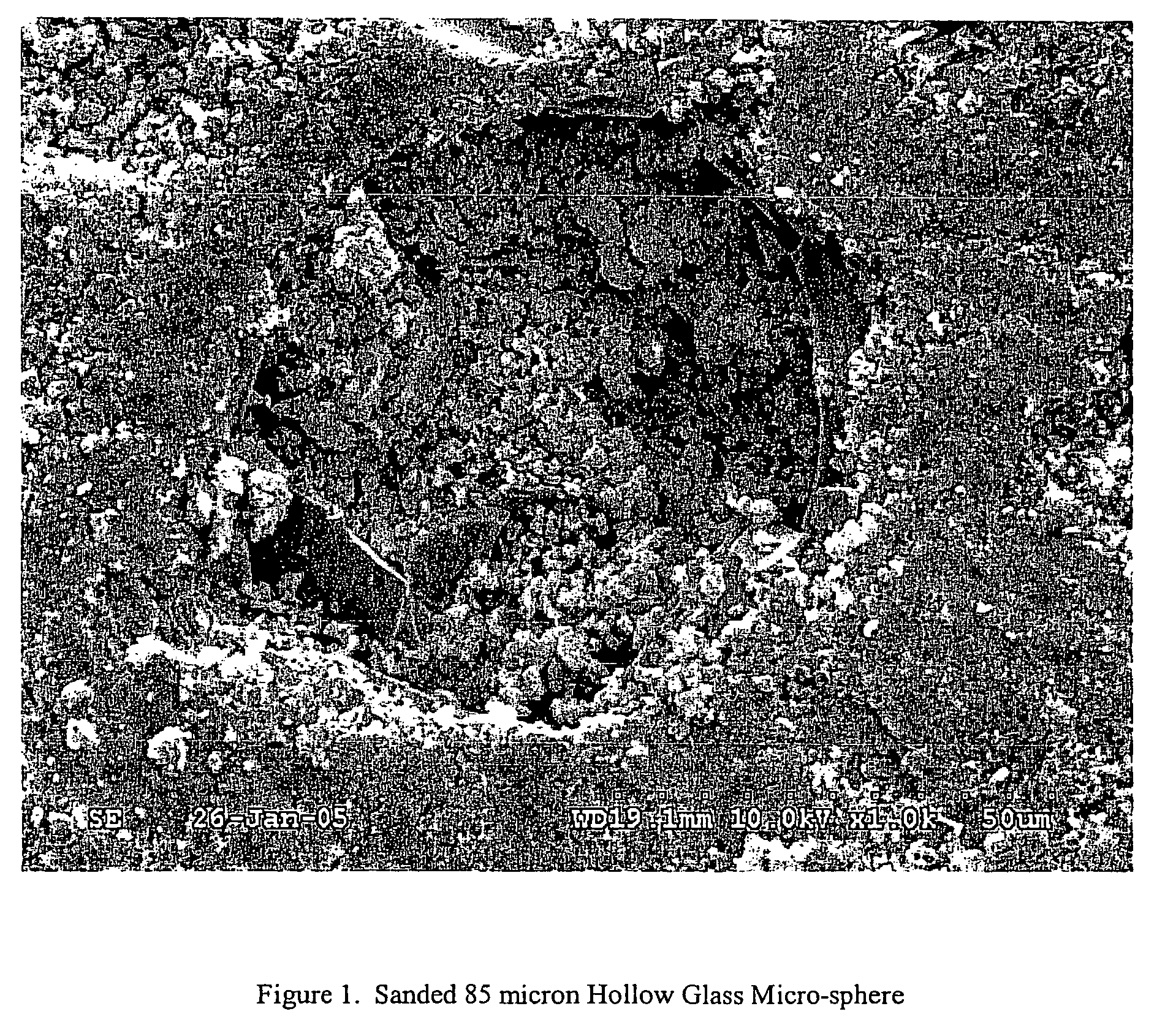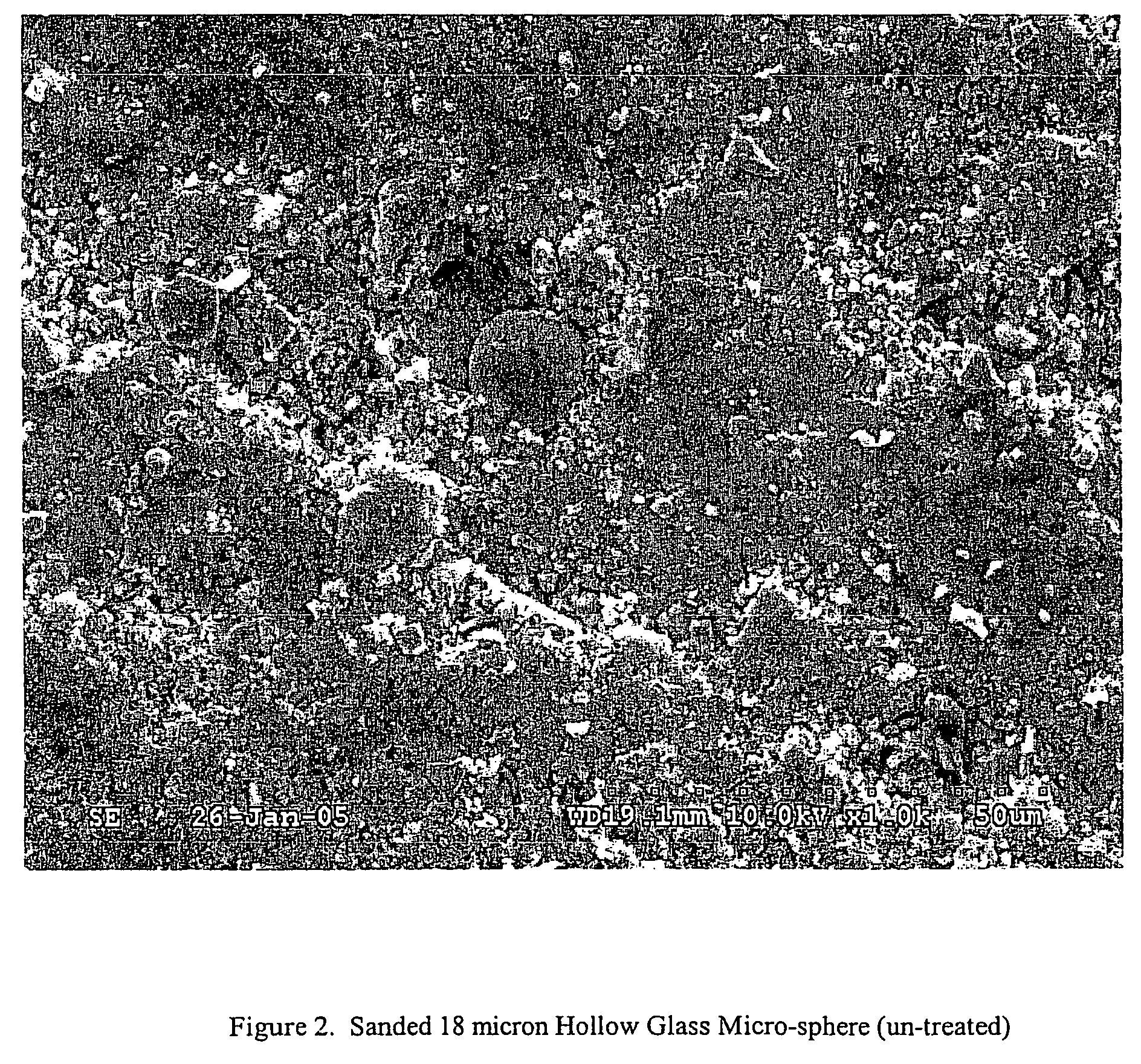Low-density molding compound
a molding compound and low density technology, applied in the field of low density sheet molding compound, can solve the problems of hollow glass spheres that have not been acceptable in smc or bmc molded, and the tendency of spherical particulates to be displaced from the molding compound matrix under processing conditions, and achieve the effect of high surface quality and enhanced performan
- Summary
- Abstract
- Description
- Claims
- Application Information
AI Technical Summary
Benefits of technology
Problems solved by technology
Method used
Image
Examples
example 1
[0033]18 micron outer diameter glass microspheroids are mixed into a conventional class “A” sheet molding compound formulation containing unsaturated polyester resin, thermoplastic additives, organic peroxides, inhibitor, calcium carbonate filler, mold release and pigment, as sold by ThyssenKrupp Budd under the trade name TCA®. The resulting formulation is cured into a plaque having dimensions of 20 cm×20 cm×0.5 cm.
example 2
[0035]The plaques of Example 1 and the comparative example were sanded with a hand orbital sander having a clean piece of 300 grit sandpaper over the surface for three minutes. A central disk of plaque having a diameter of 1 cm was cut from the plaque and shadowed with platinum-gold alloy. The resulting shadowed sample was subjected to scanning electron microscopy. FIG. 1 depicts the comparative 85 micron hollow glass microsphere that is noted to have shattered, leaving an optically perceptible defect. In contrast, the sanded 18 micron glass microspheroid containing plaque, per Example 1, is intact and therefore retains class “A” status while reducing the overall density of the plaque compared to a comparable plaque formed from TCA® lacking hollow glass microspheroids.
example 3
[0036]10 micron solid glass microspheroids are dispersed in water (33 percent weight by weight). A methanol solution of 3-isocyanatopropyltriethoxysilane (10% silane by weight) is combined with the glass microsphere dispersion such that there are 20 silane molecules per each glass microspheroid in the dispersion. The solution is stirred in a polypropylene beaker overnight. The surface activated glass spheres are decanted and dried before inclusion in the conventional sheet molding compound of Example 1 in place of the 18 micron glass microspheroids. Following sanding of the resulting plaque, cured SMC matrix was noted to wet the glass microspheroid surface, with micrographs being comparable to those depicted in FIG. 2.
PUM
| Property | Measurement | Unit |
|---|---|---|
| linear shrinkage | aaaaa | aaaaa |
| diameter | aaaaa | aaaaa |
| aspect ratio | aaaaa | aaaaa |
Abstract
Description
Claims
Application Information
 Login to View More
Login to View More - R&D
- Intellectual Property
- Life Sciences
- Materials
- Tech Scout
- Unparalleled Data Quality
- Higher Quality Content
- 60% Fewer Hallucinations
Browse by: Latest US Patents, China's latest patents, Technical Efficacy Thesaurus, Application Domain, Technology Topic, Popular Technical Reports.
© 2025 PatSnap. All rights reserved.Legal|Privacy policy|Modern Slavery Act Transparency Statement|Sitemap|About US| Contact US: help@patsnap.com


